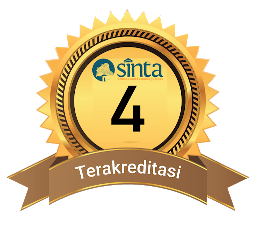Pengembangan Media Pembelajaran Kimia Berbasis Web pada Materi Sistem Periodik Unsur
DOI:
10.29303/cep.v8i1.8525Published:
2025-06-03Issue:
Vol. 8 No. 1 (2025): Edisi MeiKeywords:
Development, Web-based Chemistry Learning, Periodic System of ElementsArticles
Downloads
How to Cite
Abstract
The purpose of this study was to determine the development process, validity, and practicality of web-based chemistry learning media on the Periodic System of Elements. The type of research used is research and development (R&D) with the ADDIE development model. This ADDIE development research model consists of 5 stages, namely analysis, design, development, implementation and evaluation. Students of class XI IPA SMAN 3 MATARAM, consisting of six classes, became the population of this study. Cluster random sampling was the sampling method in this study. Cluster random sampling is sampling at the cluster/group level randomly and class XI IPA 3 was chosen as the research sample. The validity test results of the average V value of 0.77 and the average reliability level of R = 85% show that the learning media is valid and reliable. Meanwhile, student responses in the practicality test showed a positive response with an average practicality of 82.06%, so that the learning media developed was classified as very practical. Based on the results of the analysis, the learning media products developed are valid and practical to use in the teaching process.
References
Anafi, K., Wiryokusumo, I., & Leksono, I. P. (2021). Pengembangan media pembelajaran model ADDIE menggunakan software Unity 3D. Jurnal Education and development, 9(4), 433-438.
Ardiani, K. E. (2022). Multimedia Pembelajaran Interaktif Berorientasi Teori Belajar Ausubel pada Muatan IPA Materi Sumber Energi. Jurnal Penelitian Dan Pengembangan Pendidikan, 6(1), 26-35. DOI: https://doi.org/10.23887/jppp.v6i1.45159
Ariaji, R., Nasirsah, & Siregar, S. (2020). Pengembangan Video Pembelajaran Kimia SMA/MA Menggunakan Camtasia Studio 8. Jurnal Penelitian dan Pembelajaran MIPA, 5(1), 55-64.
Arini, A. D. (2015). Pengembangan Modul Berbasis Pendekatan Saintifik Sebagai Bahan Ajar Pembelajaran. Jurnal Pendidikan Akutansi (JPAK), 3(2), 1- 6.
Barbera, J. & Jessica R. V. (2011). All Assessment Materials are not Created Equal: The Myths about Instrument Development, Validity, and Reliability. American Chemical Society Symposium Series, 1074 (11), 177-193.
Batubara, H. H. (2018). Pembelajaran Berbasis Web dengan Moodle Versi 3.4. Yogyakarta: Deepublish.
Chuang, Y. T. (2014). Increasing learning motivation and student engagement through the technology-supported learning environment. Creative Education, 5, 1969-1978.
Jahro, L. S. & Susilawati (2009). Analisis Penerapan Metode Praktikum pada Pembelajaran Ilmu Kimia di Sekolah Menengah Atas. Digital Repository Universitas Negeri Medan, 5(2), 20-26.
Khairani, M., Sutisna, & Suyanto, S. (2019). Studi Meta-Analisis Pengaruh Video Pembelajaran Terhadap Hasil Belajar Peserta Didik. Jurnal Biolokus, 2(1), 158-166.
Kusumawardhani, R., Suryati, S., & Khery, Y. (2018). Pengembangan Media Pembelajaran Berbasis Android untuk Penumbuhan Literasi Sains Siswa pada Materi Sistem Periodik Unsur. Hydrogen: Jurnal Kependidikan Kimia, 5(2), 48. https://doi.org/10.33394/hjkk.v5i2.1589.
Lesmono, A., Wahyuni, S., & Alfiana, R. (2012). Pengembangan Bahan Ajar Fisika Berupa Komik pada Materi Cahaya di SMP. Jurnal Pembelajaran Fisika, 1(1) 37:41.
Lestari, I. (2013). Pengembangan Bahan Ajar Berbasis Kompetensi. Padang: Akademi Permata.
Matsna, F. U., Rokhimawan, M. A., & Rahmawan, S. (2023). Analisis keterampilan proses sains siswa melalui pembelajaran berbasis praktikum pada materi titrasi asam-basa kelas XI SMA/MA. Dalton: Jurnal Pendidikan Kimia dan Ilmu Kimia, 6(1), 21-30.
Prabowo, C. A., Ibrohim, & Saptasari, M. (2016). Pengembangan Modul Pembelajaran Inquiri Berbasis Laboratorium Virtual. Jurnal Pendidikan, 1(6), 1090-1097.
Rahmawati, N. L., Kamil, M., & Pramudia J. R. (2017). Penerapan Metode Pembelajaran Mandiri dalam Meningkatkan Hasil Belajar Peserta Didik. Jurnal Pendidikan Luar Sekolah, 1(1), 23-26.
Rayanto, Y. H. & Sugianti (2020). Penelitian Pengembangan ADDIE & R2D2: Teori dan Praktek. Pasuruan: Lembaga Academic & Research Institute.
Rijal, A. S. & Jaya, R. (2020). Pengembangan Media Pembelajaran Berbasis Web untuk Meningkatkan Kreatifitas Guru. Ideas: Jurnal Pendidikan, Sosial dan Budaya, 6(1), 81.
Sari, R. A., Saputro, S., & Saputro, A. N. C., (2014). Pengembangan Modul Pembelajaran Kimia Berbasis Blog untuk Materi Struktur Atom dan Sistem Periodik Unsur SMA Kelas XI. Jurnal Pendidikan Kimia. 3(2):1- 8.
Sugiyono. (2019). Statistika untuk Penelitian. Bandung: Alfabeta.
Untari, S. (2008). Pengembangan Bahan Ajar dan LKS Mata Pelajaran PKn dengan Pendekatan Deep Dialoque untuk Meningkatkan Kemampuan berdialog Kritis Siswa SMA di Jawa Timur. Jurnal Peneltian Kependidikan , 18(1), 154-177.
Author Biographies
Mirna Suryani, Universitas Mataram
Burhanuddin Burhanuddin, Pendidikan Kimia, Universitas Mataram
License
Copyright (c) 2025 Mirna Suryani,Burhanuddin,Baiq Fara Dwirani Sofia

This work is licensed under a Creative Commons Attribution-ShareAlike 4.0 International License.
Authors who publish with Chemistry Education Practice agree to the following terms:
- Authors retain copyright and grant the journal right of first publication with the work simultaneously licensed under a Creative Commons Attribution License 4.0 International License (CC-BY-SA License). This license allows authors to use all articles, data sets, graphics, and appendices in data mining applications, search engines, web sites, blogs, and other platforms by providing an appropriate reference. The journal allows the author(s) to hold the copyright without restrictions and will retain publishing rights without restrictions.
- Authors are able to enter into separate, additional contractual arrangements for the non-exclusive distribution of the journal's published version of the work (e.g., post it to an institutional repository or publish it in a book), with an acknowledgement of its initial publication in Chemistry Education Practice.
- Authors are permitted and encouraged to post their work online (e.g., in institutional repositories or on their website) prior to and during the submission process, as it can lead to productive exchanges, as well as earlier and greater citation of published work (See The Effect of Open Access).






